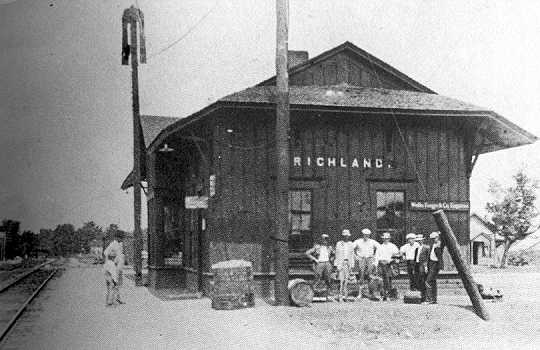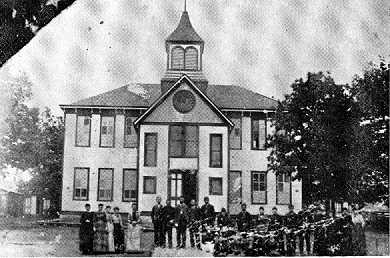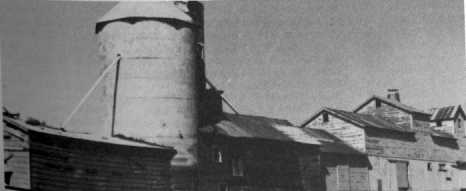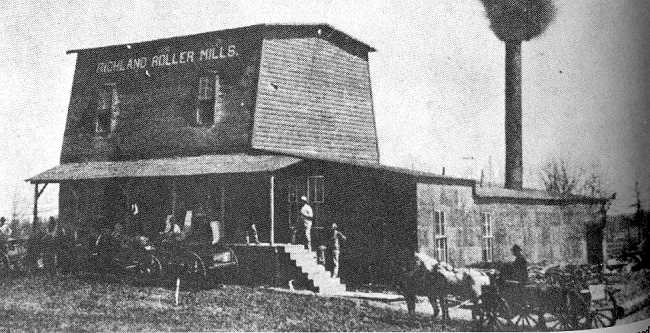
Richland, MO located on the western boundry of Pulaski County,
bordering Camden and Laclede Counties, was laid out on railroad land by
Mr. Santee, the same surveyor that laid out Dixon. The plot was laid out
on both sides of the railroad in the fall of of 1869. Some of the pioneer
families that bought these lots were the Warrens, Traws, Bradshaws, Morgans,
Tyrees, and Wests. One of the first stores erected in Richland was built
by Captian Henry E. Warren and Samuel Gibson, Warren's brother-in-law.
Later it became the H.E. Warrens store and is still in business today.
This store and others were built by some of the other families and were
all built in the fall of 1869.

Richland Academy
In 1870, a school, the Richland Institute was built. The private
academy by built by a private stock company in which almost every member
of the community had some type of interest. The institute was at one time
considered the best school in the county, and it was popular almost until
the turn of the century, when it was absorbed into the public school system.
Many dwellings were built in 1870. The Railroad Addition was soon annexed
to the east side of the original plat. The community was going to be named
Lyon's Station, in honor of General Lyon, however when a petition was sent
to the Postal Service, they found out another town was using the name Lyon,
so it was decided that the town would be named "Richland", after a director
of the railroad.

Bohannon's Mill
Sometime around 1880, three grain elevators were built in the
Richland area. Winkler's park was laid out in the southeast part of the
town. Around 1885 Traw and Burhan's Addition was made to the north of the
city, and soon after Davis's Addition was annexed on the west. In the same
year one of the best depots between St. Louis and Springfiled was erected
in Richland.

Richland Roller Mill
In 1884, Richland was incorporated as a fourth class city. By
1890, Richland was a striving business center with active stores, a bank,
a newspaper, a public school, a private academy, churches, lodges, two
flouring mills, a saw mill, a broom factory, marble works, a lumberyard,
and two hotels. Richland continued to grow throughout the early years of
the 20th Century. In the early 1930's two men from Tulsa, Oklahoma bought
several creek farms to the west of Richland and began to raise goldfish.
Now this business, known as Ozark Fisheries, is the largest business of
its kind in the Unitied States. The continuing growth of Richland began
to draw more industry into the area. Now several factories are located
in the area, making such things as boats, jeans, beef jerky and raising
turkeys.

Despite the evolution of time, Richland, MO has still remained
the same small quiet community it was many years ago, with the descendents
of the pioneer families still living in and around it borders. It has all
the necessities of life a larger town has, plus many more. I am sure that
as time passes Richland, as the other smaller towns in Pulaski County will
continue to grow and prosper. It is with certainity though that I say that
Richland will maintain the quaility of life and high Christain morals it
has always had, though the coming "Moments in Time"



Email Me!
Or Write to:
Mike Weber
101 Summitt Dr.
Waynesville, MO. 65583
